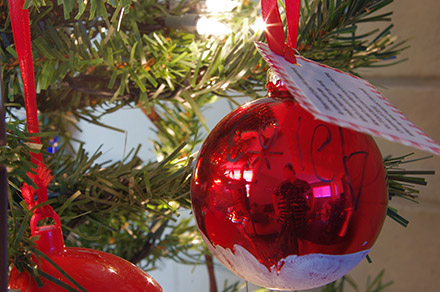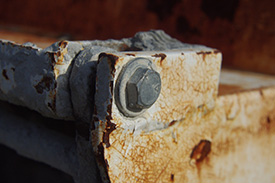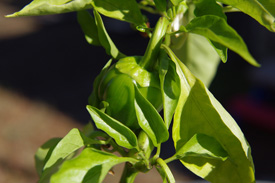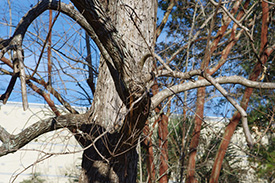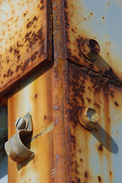Aug 27, 2011
Pentax-A 35-105mm F3.5 Review
Review
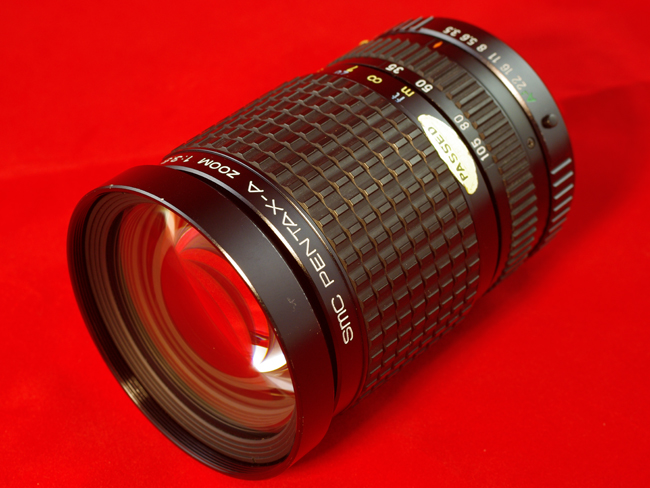
Table of Contents
Introduction
I purchased this lens some time ago from the original owner. I was lucky enough to find it in a small camera shop for a bargain price. He purchased this lens new in the late 80's for use with his Pentax Super Program. He told me that from the day he purchased it, to the day he switched to another camera brand, it was his favorite lens and was almost constantly parked on the front of his camera. I could hear a slight tinge or regret in his voice, like he wished he could still use it, when he discussed the number of great pictures he had taken with this lens. Needless to say I was intrigued and told him I would buy it. Just before he wrapped it up, he looked over the lens one last time, a slight softness in his eyes, as if to say "goodbye old friend". As he handed me the bag, I said to him "don't worry, it's in good hands". He smiled and we parted ways.
After further investigation I found raving reviews about this lens. Called the stack of primes by many and praised for it's wonderful production of super saturated reds and blues. This lens has apparently gained quite a reputation for amazing image quality over the years. So I thought it was worthy of an in depth look at it's capabilities. To prove or possibly disprove the reputation it has garnered over the years.
Lens Pictures
Specifications
- Exact Name: smc PENTAX-A ZOOM 1:3.5 35~105mm
- Color: black
- Years of Production: 1984 ~ 1989
- Catalog Number: 27097
- Optics
- Optical Formula: 15 elements in 13 groups
- Aperture Range: f/3.5 ~ f/22
- Number of Aperture Blades: 6
- Minimum Focusing Distance: 1.5 m
- Maximum Magnification: 0.25 X
- Mechanics
- Filter Diameter: 67 mm
- Maximum Diameter: 70 mm
- Length: 98 mm
- Weight: 615 g
- Special Features: rotating front element
- Accessories
- Cap: plastic clip-on cap, 67 mm
- Fitting Hood(s): clip-on hood: RH-B70
- Fitting Case(s): hard case: HD-143
Optical Design
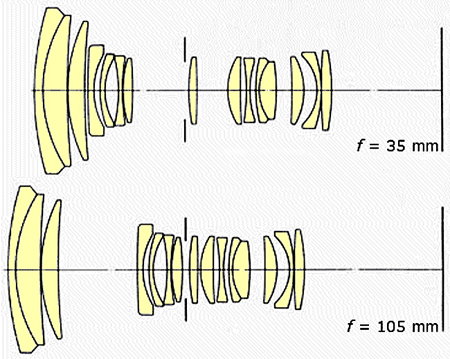
Build Quality
Like most Pentax-A lenses, this is a very well built lens. It's heavy and solid, but still relatively compact being just slightly longer then my Sigma 17-70mm when totally retracted. When focused all the way to 1:4 macro at 105mm (full extension) it is slightly shorter then the sigma zoomed out to 70mm. The zoom ring is tight and resistive yet smooth. The focus ring is just right, smooth with just the right amount of resistance. When switched into macro focus mode, the focus ring tightens up a bit, but not enough to affect usage. The Aperture ring is made of metal. All lettering is etched in. No silk screening here. The rear elements move in and out with zooming and macro focusing. The body incorporates something I have never seen before, a dust prevention pad that seals the moving rear element group to the body to stop dust from entering. Of all the lenses I've examined, this is the first one I've seen that has such a feature. Then again, this is the first Pentax-A zoom I've owned. I have to say, that the lens designers at Pentax were thinking extra hard the day this lens was designed. This is a lens that was designed and built to take pictures for a very long time. Considering the age of this lens and the use it's seen (according to the previous owner) I'd have to say the Pentax lens designers succeeded if their aim was to produce a lens to last generations.
Handling and Focusing
As I mentioned before, it's a bit heavy. Actually I'd say surprisingly heavy for it's size. I actually find the weight to be a plus when using this lens as the weight helps to steady the lens while focusing. The focus ring has an interesting feature where one must shift the focus ring forward to use macro focusing. This feature can be a little annoying when the subject is right on the cusp of normal and macro focusing mode. I found I adapted to it quickly and a slight shift of my body forward or back would allow me to get the subject just on one side or the other.
When in normal focus mode, this lens is a parfocal (does not change focus when zooming) and the front element rotates when focusing. That's a bit of a let down for anyone interested in using polarizing filters or an aftermarket petal lens hood. When shifted into macro mode, this lens becomes a verifocal (focus changes when zoomed) and the front element does not rotate when focused. In normal focus mode, the focus throw is roughly 1/5th of a turn from infinity to 5'.
Shifting into macro mode the focus throw is an additional 1/5th turn from 5' to the minimum macro focus distance (@ 35mm) of roughly 11". Maximum macro magnification of 1:4 is achieved at the 35mm setting. The zoom ring is smaller then the focus ring, as is typical of a lens from this era, but is easy to find and use when needed. Zoom creep was not a problem at all which is probably due to the tightness of the zoom ring and the short travel of the front element when zoomed. This lens also has a fixed max aperture of f3.5 unlike most zooms produced today that have variable apertures. This means that the max aperture a 35mm is f3.5 and at 105mm it is f3.5. This comes in handy when using the long end of the zoom range in low light.
Image Quality
Resolution and Contrast
I tested the performance of this lens using the Shingle test. The shingle test is similar to the brick wall test, but using a shingle sample board instead. The advantage of the shingle test is that all those little granules on a shingle make for a great resolution and contrast test from center all the way out to the edge and extreme corners. Since the granules are relatively consistent, yet different, you can see any change in resolution, contrast or color from center all the way out to the corners. Keep in mind that 'Sharpness' is a subjective term actually describing the combination of resolution and contrast. A high resolution image with low contrast would often be described as 'soft' to the viewer, while an image with average resolution but excellent contrast would often be described as 'sharp'. For the purposes of this test I try to separate the two contributing factors, but being human, please take in to account that
Graded on a scale of 1 to 100. 1 being a complete loss of image to 100 being tack sharp. This is a subjective test as I do not own any fancy (and expensive) resolution testing equipment or software to gage the resolution of lenses. Your results and opinions may vary.
At 35mm f3.5 center sharpness is good with room for improvement. Border sharpness is less then satisfactory with corner sharpness being pretty low. At f4 things improve a little but major improvement is not seen until f5.6 at which point the edges and corners become usable. At f8 and f11 tis focal length reaches it's peak performance with the center having excellent sharpness and the corners and boarders having very good to excellent sharpness. Beyond f11, diffractions starts to kick in and sharpness begins to fall off.
At 50mm the center sharpness is almost identical to 35mm across the aperture range with corner and border sharpness starting out much better then 35mm at f3.5. Sharpness improves evenly across the frame as the lens is stopped down further with f8 being the peak. At f11 center sharpness drops slightly and diffraction takes it's toll from there on up.
At 80mm there is a slight drop in border and corner sharpness at f3.5 and f4 compared to 50mm, with improvements over 50mm seen at f5.6 where the center is slightly sharper. Peak center performance is seen from f5.6 to f8 with the corners reaching their peak at f11. Again beyond f11 diffraction sets in a sharpness degrades as the lens is stopped down further.
At 105mm f3.5 sharpness across the frame is identical to 50mm f3.5. Improvement is not seen until f5.6 with center sharpness peaking at f8 and f11 and corner sharpness peaking at f11.
Overall this is a very sharp zoom lens with similar sharpness characteristics to prime lenses of similar focal length. It is not quite a sharp as the equivalent prime lenses as most of them would rate a 10 at f8 but it does come very close.
Sharpness Test Images
In the images below, the bottom left hand corner of the shingle sample board has some kind of gunk embedded in it so that corner always appears washed out and less sharp even at peak sharpness. In additional test images I have seen no evidence that there is a problem with the lens in the lower left hand corner, so please disregard this area when reviewing the images.
Vignetting
For a quick but effective vignetting test I used the back side of some white vinyl wall board (the type seen in truck stop bathroom walls) as it is a somewhat smooth, flat white surface. Very minor vignetting was observed at 35mm f3.5 and f4 with the light fall off clearing up entirely by f5.6. Similar results were seen at 50mm with no vignetting visible at 80mm. At 105mm vignetting was observed at f3.5 and 4 with none visible at f5.6 or above. Vignetting at 105mm was more severe then at 35mm, but still minor. This is a film lens being used on an APS-C camera so I honestly did not expect to see much vignetting. On a film body it is probably more pronounced, but on APS-C it is so minor it is barely worth reporting. The pictures below show my observations.
Distortion
For the distortion sets I used the same vinyl wall board with a grid drawn on it with a magic marker. I assure you, the grid lines are straight, square, and consistently spaced. Years of drafting classes taught me the very valuable skill of drawing a straight line. Unfortunately, though my line drawing skills are still very well developed, my framing skills were lacking slightly in the test. I did not sufficiently align the image with the grid, so you will have to use you imagination a little in interpreting the results. I actually held a clear straight edge up to my LCD monitor to interpret the results.
At 35mm barrel distortion is evident, though not severe and easily corrected in post processing. In practical use the distortion at 35mm will probably not be noticeable. At 50mm distortion is so minor I would say it's just about distortion free. At 80mm the distortion switches to a very slight pincushion shape, but again is so minor it is unlikely to be noticed. At 105mm distortion is a very slight pincushion that is unlikely to be observable in practical use. Overall distortion is very well controlled across the zoom range and will not likely pose an issue in every day use. Keep in mind that these tests were performed on an APS-C camera. On a full frame camera distortion would most likely be more pronounced towards the edges and corners.
Aberrations and Flare
Although I will not say that this lens is prone to chromatic aberration (CA), some was observed. Minor CA was observed, specifically purple/blue and green fringing on some high contrast areas. Purple fringing seems to be more of a problem at f3.5 and 4 while green fringing seemed to show itself more at higher apertures. The purple fringing at f3.5 was more pronounced then the green fringing at higher apertures. Green fringing was limited to 1 to 2 pixels width while purple fringing was observed to extend out to 4 pixels in the most extreme example. Again, though it was present, fringing was not pronounced, nor was it ubiquitous. Fringing was not observed to be any more severe at longer focal lengths then short focal lengths. Fringing was only evident in extreme circumstances where other newer lenses would have had much more trouble. This is rather surprising considering this lens lacks low dispersion elements.
Flare was observed though I will not say this lens is prone to it. I will say that it is susceptible to flare. Flare was observed when the lens is pointed in plane or elevated and between 75 and 85 degrees off axis from a bright direct light source such as the sun. Pointed further toward the light source flair disappears until the lens is within 15 to 20 degrees of the light source. All other attempts to produce flair were unsuccessful. When flare is present at 75-85 degrees it appears as a ring or partial ring in the image. Within 20 degrees and/or the light source is in the frame, a veiling flair is observed. Though this lens is not prone to flare, it would definitely benefit from a hood as the front element is large (roughly 67mm) and not recessed into the body more then a few millimeters which makes it susceptible to flare under the right circumstances. Adding a lens hood would probably increase the ability to take pictures with this lens on sunny days. For a lens with fifteen elements and even more glass surfaces, this lens is quite resistant to flair. I guess that is the advantage of SMC coating.
Bokeh
This is the category that I think is the major weakness of this lens. Bokeh is a mixed bag with this unique zoom. It can be harsh and unpleasing or smooth and unobtrusive. In close up macro shots, the bokeh is usually smooth and creamy. In standard focus mode, at any focal length the bokeh can be either harsh or smooth depending on the background lighting. When the background is brighter and more directly lit then the subject the highlights take on a very busy harsh look. At f3.5 in most situations the bokeh is too busy and distracting. Some might even call it ugly. It almost has an impressionistic feel to it that some might find appealing. Personally I'm not crazy about it, but I can see how in certain situations the busy bokeh at f3.5 might add an interesting look to a picture.
I actually found that bokeh improves with higher apertures, though still a little busy it is smoother and less distracting. Bokeh is actually quite nice and smooth with darker or more consistent backgrounds that do not contain too many bright highlights. On the right background the bokeh produced by this lens its actually quite pleasing. Bokeh color fringing was also observed in a picture of Christmas lights at f3.5. I personally like this effect, but I understand that some others do not.
 35mm f/3.5 |
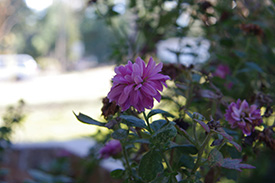 35mm f/8 |
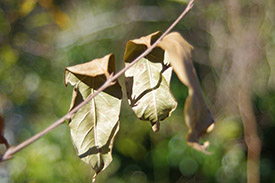 35mm f/3.5 |
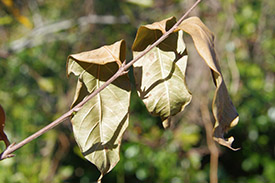 35mm f/8 |
 35mm f/4 |
 35mm f/5.6 |
 35mm f/3.5 |
Color
This lens has excellent color reproduction. Reds, blues, and purples come out very saturated and almost seem to pop out to the image. This lens is capable of preserving the subtle color tones seen in flowers and other colorful objects better then most other lenses I have used. Other colors are also reproduced very well, but this lens seems to favor Reds and blues more so then greens and yellows. If color is what you are after, this is the lens that will produce.
Uses
This would make a good walk around lens for someone who does not mind the longer shortest focal length of this lens or the relatively short telephoto end. With the crop factor the field of view of this lens is equivalent to 52.5 to 157.5mm, making it less useful compared to newer lenses with longer focal lengths. Also, the fact that it is manual focus makes it a less likely candidate for someone looking to take snap shots or action shots. That being said, the sharpness, contrast, color reproduction, close focusing ability, relatively fast max aperture, and the versatility of multiple focal lengths make it ideal for someone looking to take creative shots in multiple shooting situations. If you are after creative colorful pictures, but don't want to carry around a bag full of prime lenses, this lens can serve to lighten your load quite a bit.
Sample Images
All images taken in JPG format with auto white balance and some sharpening applied in camera. No post processing or cropping has been applied.
Value
For the price I paid for this lens ($60) the value is beyond excellent. I get a near prime quality lens that essentially replaces four prime lenses in my bag. It takes excellent sharp contrasty colorful pictures and has a relatively versatile zoom range. I have seen this lens sell recently for anywhere from $150 to $250 depending on the condition. If I was to ascribe a value to this lens I would say it should be worth somewhere between $150 and $200. I wouldn't pay much more then that as one can purchase newer more versatile zooms (and with auto focus) for just a little more. Regardless, at $200 or below this is still a very nice lens to have considering the quality you can expect from it. The Pentax-A series lenses are 25 years old at this point, and this one in particular is sure to continue to produce high quality images for 25 more years to come. If you are looking for a high quality, rugged yet inexpensive zoom lens, this fits the bill nicely.
Conclusion
The SMC Pentax-A 35-105mm f3.5 zoom is a very good to excellent older close focusing manual zoom lens. It's nickname "stack of primes" although accurate when describing the image quality produced, should probably be relabeled "stack of slow primes" as it's f3.5 max aperture is relatively slow in relation to a 50mm f1.4 or a 35mm f2. Though it is relatively fast for a zoom at f3.5 an f2.8 max aperture would have been nice.
Resolution and contrast (sharpness) are very good to excellent with this lens and color rendition is excellent. Aberrations are minimal and Flair and Distortion is very well controlled. The only week spot seems to be a tendency toward busy bokeh when shooting subjects with brightly lit highlights in the background. Though the bokeh is actually quite nice when dimmer backgrounds are present. Handling and focusing are quite pleasant with this lens, though it is a little heavy and the focus ring has that annoying macro shift feature. Overall it's a great lens for the price. There aren't many newer zoom lenses that can offer the image quality this one can for the same or similar price. The SMC Pentax-A 35-105mm f3.5 zoom would be an asset in anyone's photo bag.
Rating
| Sharpness | 9 |
| Aberrations | 9 |
| Bokeh | 8 |
| Handling | 8 |
| Value | 10 |
| Overall | 8.8 (Very Good) |
Ready to get your A 35-105mm zoom? Try the Marketplace on PentaxForums
Also, if you currently own this lens and would like to write your own review, please visit our Pentax user reviews section.
This lens review was written for PentaxForums.com by D.J. Schrey.
Page 1 of 1

